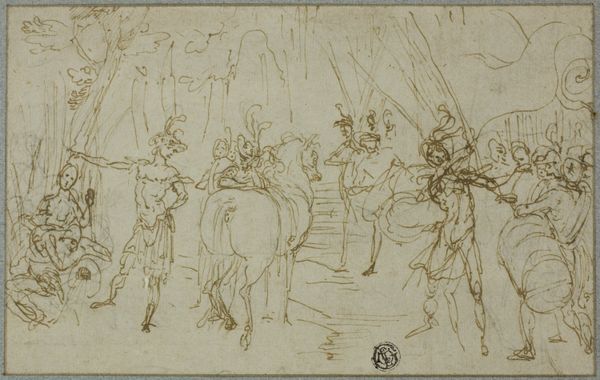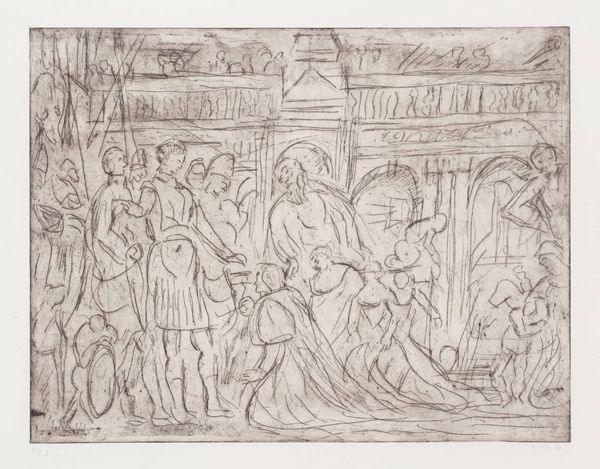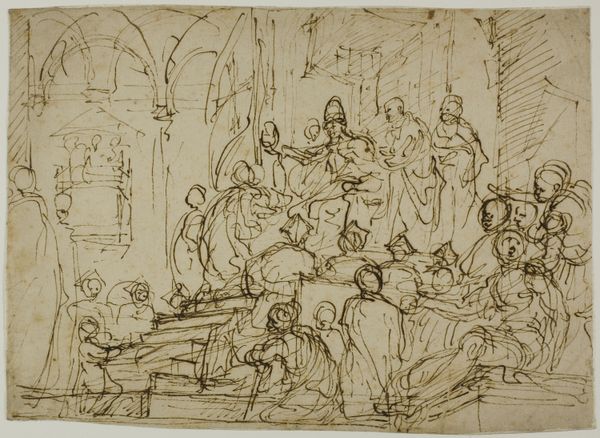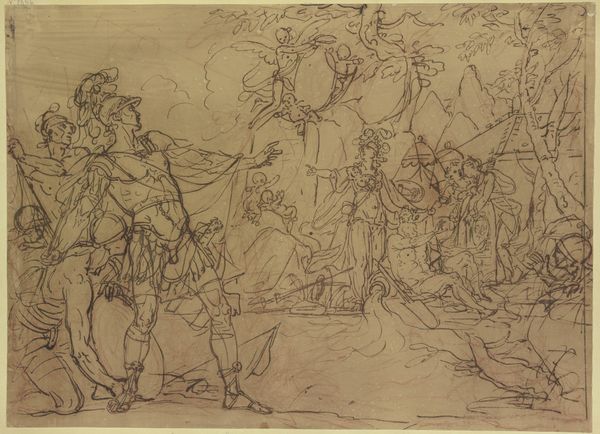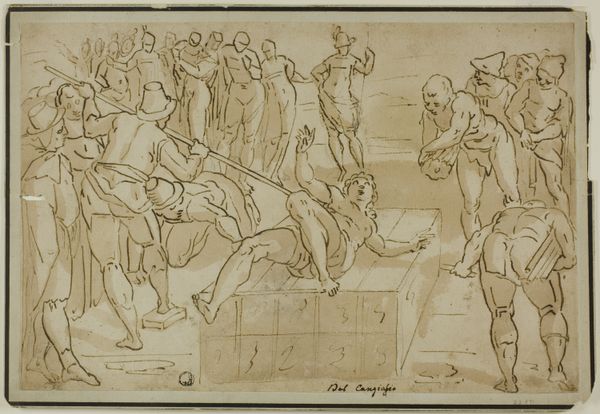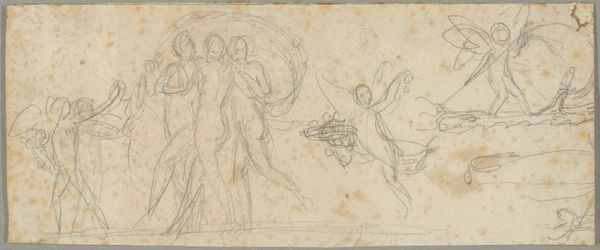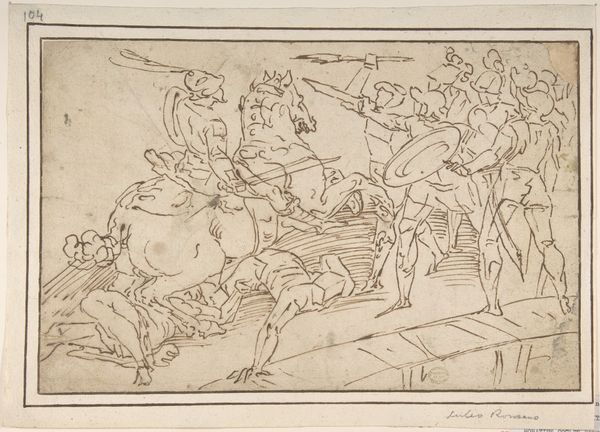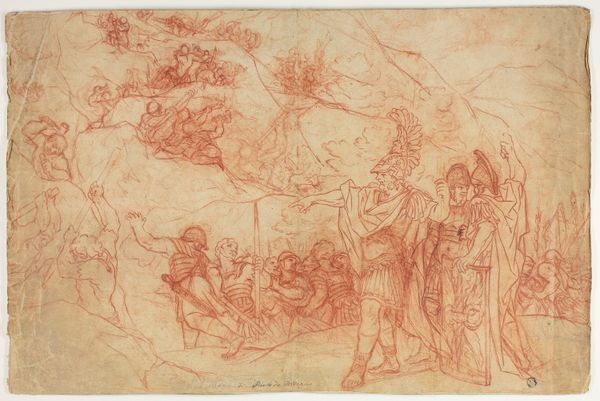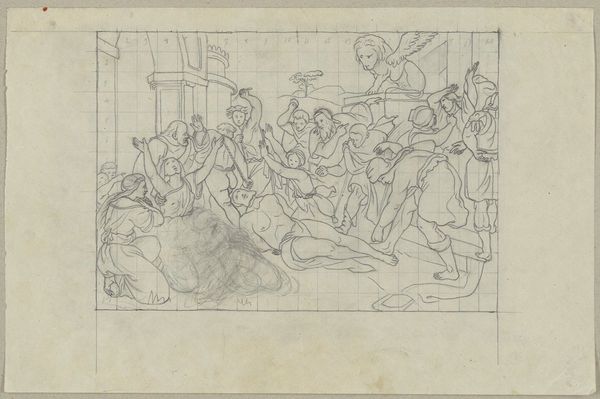
drawing, ink
#
drawing
#
baroque
#
figuration
#
ink
#
history-painting
#
rococo
Copyright: Public Domain
Curator: Here we have Paul Egell’s “Der Praetor erkennt die Freilassung eines Sklaven an” or “The Praetor Acknowledges the Freeing of a Slave," created in 1748. It’s a drawing in ink. Quite an evocative scene, isn't it? Editor: It does strike me immediately—all that bustling energy, somehow caught in this delicate web of lines. The drama practically leaps off the page, doesn't it? You feel the weight of the moment even in this unfinished sketch. Curator: Precisely. Egell, straddling Baroque and Rococo styles, uses line to articulate both the architectural grandeur of the setting and the emotional tension of the figures. Note the arrangement of the figures – how the praetor's gesture seems to mediate between the supplication of the slave and the stoicism of the onlookers. Editor: It is as if every figure has their assigned station and almost dances along the same, orchestrated tempo. Did the artist strive to put so much of a social commentary and political analysis of the class at the forefront or merely tried to capture what can be described as an everyday spectacle of a particular, powerful epoch? Curator: Both, perhaps. History painting, as a genre, invariably involves a degree of interpretation. The act of freeing a slave was a highly symbolic event, particularly in the 18th century when the Enlightenment ideas challenged existing social hierarchies. Egell isn't merely depicting a historical scene; he’s engaging with ideas of justice, power, and liberty. Note how the composition directs your eye to that central, kneeling figure—a masterful manipulation of perspective. Editor: I’m compelled to interpret those deliberate, albeit unpolished strokes of ink and their purpose; it seems like an invitation for the audience to join this tableau vivant with their feelings, notions and personal doctrines regarding justice, honor and above all, human worthiness, regardless of background. Even if there is no splash of vivid color or rich tonal variation. The visual statement is far from simple here. Curator: An excellent point. Egell's conscious employment of visual cues, coupled with the unfinished nature of the drawing, compels us to engage more actively. We, as viewers, are invited to complete the narrative, to imbue it with our own understanding. The Städel Museum is fortunate to have such an affecting work. Editor: Indeed. It is those open-ended qualities, that sense of potential, that gives this seemingly modest drawing such enduring resonance. Thanks for illuminating all those intricate aspects within the piece.
Comments
No comments
Be the first to comment and join the conversation on the ultimate creative platform.

